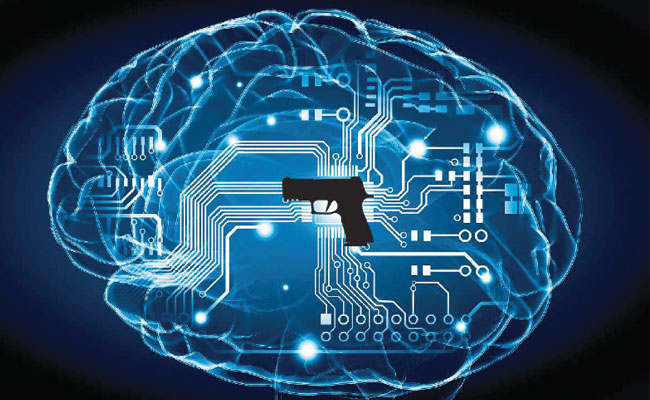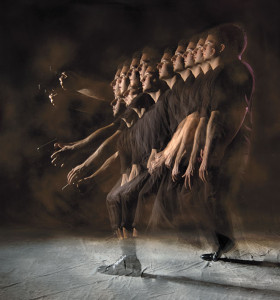September 22, 2017
By Patrick Sweeney

Ever watch a good shooter in a match? You might miss the reloads. How did they get that fast, that smooth or that good? Practice, yes, but what kind? Some practice models prove to be not just distracting, but also counterproductive. One is the medical school model. Aspiring physicians learn by the method known as "see one, do one, teach one." And then they go on to the next one. Which is fine if you have the particular knack that med schools sort for, but that doesn't necessarily work for the rest of us.
The analogous method would be learning the basics of a reload, then spending many hours doing reloads at the fastest speed possible. Let me save you some time: You'll be awful, and you'll get frustrated.
A great quote from the misty dawn of IPSC shooting: "You spend your first 100,000 rounds learning how to shoot. You spend the next 100,000 unlearning the bad habits you learned in the first 100,000."
Advertisement
You may have learned this back in school when you were trying out for a team sport, but it is still true: "Perfect practice makes perfect."
So, if you want to learn to reload perfectly, smoothly and speedily, you practice perfectly. Go down into the basement, the laundry room, wherever you can dry-fire, and walk yourself through the motions. You've fired the shot, now turn the pistol in your hand. Reach down and sweep your hand to the next magazine as you press the mag button. Find the new mag and get a firm, correct grip on it. Pull it out, lift, rotate, orient, insert, then drive home. Bring your hands together, drive the pistol out and line up the sights. Complete all of this while the pistol stays in front of your face.
If you spent less than five seconds doing that, you did it wrong. Wait, what? But the timer's ticking, I'm losing precious seconds to the competition, I have to learn how to do it fast. That's the mistake right there. You should learn to do it smoothly. Speed will come, and the stress of competition will also decrease your time.
Advertisement
So, what exactly is going on here? When you learn, you are connecting neurons. You build pathways. Each night when you sleep, your brain gets to work dismantling the less-used ones. It is fashionable in TV dramas to have one character who "never forgets." They remember everything. Pity such people. Do you need to remember that the gasoline you bought on Sept. 17, 1983, for your Ford LTD II, cost $1.05 a gallon? Or that the car took 21 gallons? That's why writing was invented. The housecleaning your brain performs provided context for the aphorism "use it or lose it." All things fade, some more than others. However, you can build fade-resistant skills. You simply must repeat them over and over. However — and here's the rub — what you repeat, you learn. If you learn it wrong or you learn it sloppy, you'll have to relearn it to get it right.
That's why perfect practice is so important. You are programming subroutines, prebuilt reflexes that do not require conscious supervision. They can be executed by the subconscious when needed and at full speed. All the conscious mind must say is, Go!
 I had a lesson in this when I was training in Tae Kwon Do. I was on the road visiting a non-TKD school and sparred with a martial artist who had begun his work in Tai Chi Chuan. You know, the "slow-motion" martial art. And yes, it is (or can be) a martial art. Despite his having learned a "slow" art, I could not get through his blocks. I wasn't bad; I was strong, fast and experienced. But he was smooth, and the stress of sparring sped him up. So, it might seem obvious to think that if you learn to reload slow, you'll always reload slow, but that isn't the case. It will be efficient.
I had a lesson in this when I was training in Tae Kwon Do. I was on the road visiting a non-TKD school and sparred with a martial artist who had begun his work in Tai Chi Chuan. You know, the "slow-motion" martial art. And yes, it is (or can be) a martial art. Despite his having learned a "slow" art, I could not get through his blocks. I wasn't bad; I was strong, fast and experienced. But he was smooth, and the stress of sparring sped him up. So, it might seem obvious to think that if you learn to reload slow, you'll always reload slow, but that isn't the case. It will be efficient.
Learn the basics, learn them smoothly and learn them well. The two hardest parts of the reload are the extraction from the belt and the insertion into the magwell.
Learn the extraction with a sweep. When you bring your hand down from the pistol, don't drive it straight to the magazine. Bring it down toward your belt buckle, then sweep it back to the magazine. Why? You'll grab the first one available. If you get into the habit of driving straight to a magazine, you may find yourself driving straight to the one you already used. Then what? By sweeping, there will always be a magazine to grab, at least until you run out.
When you grab the magazine, grab it with the front in the palm of your hand and your forefinger extending up to the top round. This takes advantage of pointing. We've all had a literal lifetime of practice pointing, so use that. Point the magazine toward the pistol.
Then, for insertion, don't try to do it all at once. Drive the magazine up to the pistol quickly, then briefly slow down to ensure alignment. Once the magazine is lined up and touching, drive it home. Fast-slow-fast.
What are we doing with these techniques? The sweeping makes every reload the same. There's no need for the brain to try to keep track of whether we've already used mags one and two, so we have to go for number three now. That slows you down. Under stress, the conscious mind acts like a micromanaging boss. It assesses everything and gives detailed instructions. In a stressful situation, there's no time for that. Lacking preprogrammed subroutines, people in a stressful situation just stand there, unable to act. Their mind is trying to assess, analyze, decide, then command actions. And it is always behind the curve. Properly done, the conscious mind says Reload, and the subroutine simply happens.
And the fast-slow-fast part? Large motions can be done fast and with force. Precise motions need, dare I say it, precision. Fast to the gun, slow as your subroutine checks alignment, and then fast to seat it and continue shooting.
In your practice sessions, spend time learning the movements slowly, then gradually increase your speed until you make a mistake. That could be crashing the mag lips into the frame or missing the pistol entirely and hurling the magazine into the basement rafters. Stop, catch your breath and slow down. You've hit your limit; now reinforce the perfect form, and close out your practice for the night with slow, perfect motions.
And you are doing all this in front of your face — why? Not because the instructor, a retired operator, tells you that it's a special technique. You do it that way because Jerry Barnhart developed it back in the early 1980s. When you are moving, especially if you have to negotiate doors, steps, barriers or trip hazards, you want to be looking out, not down. Barnhart moved the reload up into his line of sight so he could keep moving through a stage, reload and really crush our scores. He was a member of our gun club for a few years, and I had the benefit of monthly score crushings. Special Ops didn't develop it, Barnhart taught them. After he taught us the hard way.
And that Tai Chi Chuan martial artist? We came to a standstill. I finally had to use techniques that he hadn't experienced to get through or around his blocks. I was able to do that because my master instructor insisted that we learn and test basic techniques outside of Tae Kwon Do.
"You don't know how to beat him if you don't know how his system works."
Mr. Shim insisted we learn and practice the basics, bless him.
So, do it the easy way: Learn the basics and spend time developing perfect form. Stress and the beep of the timer will speed you up.
Enjoy articles like this?
Subscribe to the magazine.
Get access to everything Guns & Ammo has to offer.
Subscribe to the Magazine
